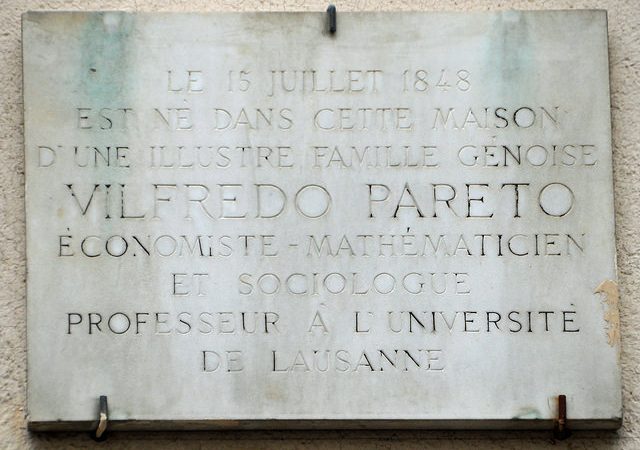Mark Twain said, “It's not the size of the dog in the fight, it's the size of the fight in the dog.” Books don't have to be masterpieces or hundreds of pages long. Learn how to write fast and get one published in less than 90 days.

What you don’t know about Pareto’s 80/20 principle
I call myself a “life hacker” which means I try to get maximum enjoyment* with minimum effort.
You can think of it like an equation. I write on my Facebook page:
life_hacking = happiness / effort
while life_hacking <= 1
effort = effort – 1
end
This means that if you’re putting in more effort than you are gaining happiness, you should find a way to reduce your effort.
Pareto’s 80/20 principle is a key part of this quest to reduce effort (without diminishing results).
It is considered the holy grail of productivity. The mantra says: 80% of results come from 20% of effort.
Self-help books, business consultants and sport coaches have all borrowed from Pareto’s principle.
However, they’re nearly all wrong.
This article looks at what you don’t know about Vilfredo Pareto, the Italian-born engineer, economist and sociologist, and his Pareto principle:
Vilfredo Pareto and the Pareto Principle
In 1896 Pareto observed about 80% of the land in Italy was owned by 20% of the population.
He also observed 20% of the pea pods in his garden contained 80% of the peas.
Two thoughts come from this:
- An idea of income distribution – 20% of people have 80% of the money
- An idea of production efficiency – 20% of effort creates 80% of the produce
This all makes sense so far and you can see how it can be extrapolated in terms of business practice: focus on the 20% of clients that generate 80% of revenue.
There is inequality within the inequality
Nassim Taleb, author of #1 best selling The Black Swan, illustrates perfectly why Pareto’s principle is not as straightforward as you might think:
“If there is inequality, then those who constitute the 20 percent in the 80/20 rule also contribute unequally”
While yes, 20% of people might do all the work that adds up to 80% of the results, within that 20% there is also inequality.
It could be that one person within that pool of 20% does all of it. Or half of it. Or more than the others.
“Only a few of them deliver the lion’s share of the results. This trickles down to about one in a hundred contributing a little more than half the total.”
Going back to Pareto’s original observation: 80% of the land in Italy is owned by 20% of the people, it did not mean the top 20% of land owners had an equal share.
One of the land owners could have had 79%, and the others split between them 1%.
In terms of business, it’s not that 20% of clients give you 80% of your revenue, it could be that one client gives you 50% and the others give you just 30%.
What This Means For Your Productivity
You don’t want to find just the 20% of effort that gives you 80% of results, you want to find the unexpected 1% that gives you half of that 20%.
I suppose you could call it the 1/40.
Actions
- What are you trying to be more productive with?
- System-map the entire process (write a step-by-step)
- Measure the time for each step
- Calculate the results of each step (which delivers the greatest returns?)
- Rank them in order of the greatest ratio (smallest time : greatest return)
Many people mistake ‘maximum enjoyment’ to mean something more along the lines of ‘work hard, play hard’. To me, maximum enjoyment is better thought of in the Epicurean sense, what Hiram Crespo explained to be ataraxia or imperturbability: to maintain consistent tranquility and peace of mind.
What are your thoughts? Are you trying to improve anything in terms of productivity? Have any questions? You can always send me a message on Facebook.




Nice article Tom. Would love to see a few examples where you have used this process to increase productivity in a specific activity. A step-by-step view.
I agree that it’s important to review the 20% to identify an even, and potentially much much greater difference in effort and return.
Keep up the content mate. It’s fantastic.
Hey Lawrence,
This is definitely something I want to measure more of in the future, especially going into LatestDeals. I think I mentioned to you how with the suits business, we looked at the effectiveness of social media and blogging versus telephone calls and emails. That would be a great example of how in terms of time, telephone calls accounted for 1% of the time, but made up at least half of the 20/80 results. So you could call it 1/40. Looking forward to seeing you on Wednesday!